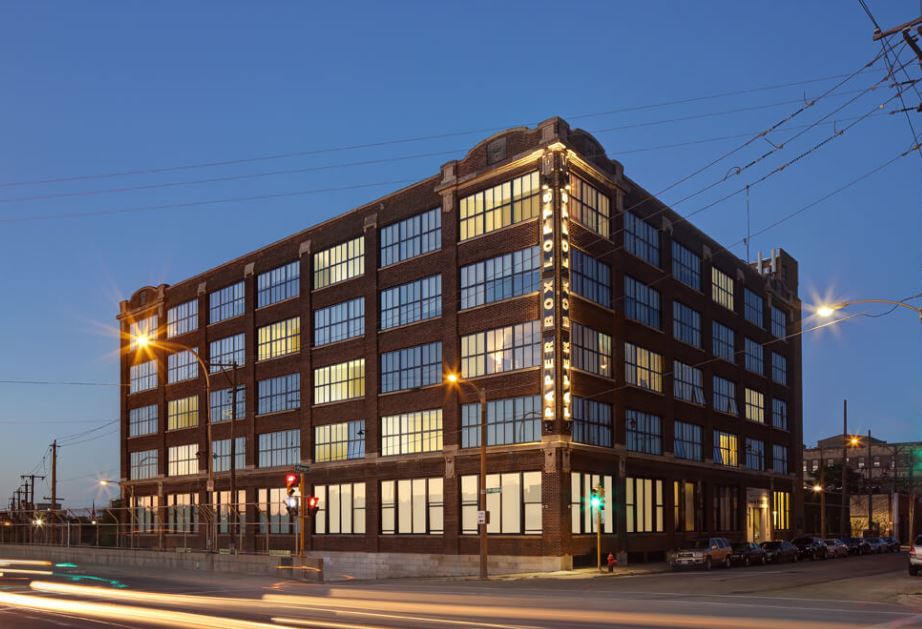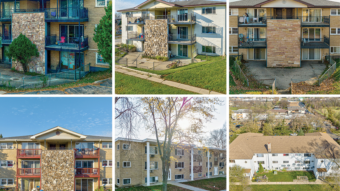Even as the multifamily sector has boomed for more than a decade, developers pointed to one major challenge: It simply wasn’t affordable for them to provide affordable apartment units unless they received financial incentives from federal and state governments.
That’s meant that while high-end apartment towers have risen in cities across the Midwest, these units were unaffordable to a great chunk of the population. And now that COVID-19 has swept the country? The lack of affordable apartment units is expected to become even more of a problem.
This is the topic that some of the top multifamily professionals in the Minneapolis/St. Paul area tackled during the latest Breaking Through the Disruption webinar held by REjournals. Participating in the webinar, COVID-19 and Affordable Housing in Minnesota, were Thomas O’Neil, vice president of market development in the Minneapolis office of Dougherty Mortgage; Deidre Schmidt, president and chief executive officer of CommonBond Communities in St. Paul; Alan Arthur, president and chief executive officer of Aeon in Minneapolis; and Chris Sherman, senior vice president of Minneapolis-based Sherman Associates.
O’Neil, the moderator of the webinar, said that the Twin Cities area has made progress during the last decade in providing its residents affordable multifamily housing. He pointed to the numbers to make this case:
In 2010, the Minneapolis/St. Paul region saw the addition of under 300 new units of affordable housing. In 2019, developers brought more than 2,300 affordable units to the area. And from 2010 through 2019, developers added about 11,000 affordable units.
But even with that increase? The Twin Cities area is still far behind where it needs to be when it comes to the number of affordable housing units. If the developers truly met the demand, they would have built about 42,000 new affordable housing units during the last decade, O’Neil said.
“We are falling behind each year,” he said.
O’Neil said that there are about 134,000 renter households in the Twin Cities that are severely cost-burdened, meaning that they are spending at least 50 percent of their incomes on rent each month.
The pandemic and business shutdowns will only exacerbate this problem, O’Neil said.
“That problem was already there before COVID-19,” O’Neil said. “Where there is great interest in providing affordable housing, the funding isn’t there to do it. Now we have this ominous problem affecting all aspects of our industry.”
O’Neil asked members of the panel how their renters are doing now that shutdown orders have been in place for nearly two months. The good news? Panelists said that rent collections so far have been stronger than expected.
Schmidt with CommonBond Communities said that rent collections at her company’s properties are only about 6 percent below where they were last year at this time.
“April and May have turned out to be not as bad as many had feared,” Schmidt said. “The increased unemployment benefits and government stimulus checks do seem to be helping folks meet their obligations.”
Still, there have been challenges. Schmidt said that 10 of CommonBond’s apartment communities have collected less than 50 percent of their normal rents.
“I keep reminding myself that just because tenants have made rent, doesn’t mean that they are doing OK,” Schmidt said. “We knew that 71 percent of renters had compromised on some other need in life before COVID-19. We can only imagine what kind of compromises people are making now.”
Arthur said that rent collections in his company’s portfolio of buildings was about 2.5 percent lower in both April and May than it was during the same months a year earlier. But what happens in the future, especially after higher unemployment benefits might end and the stimulus money might be spent?
That’s the more difficult question, Arthur said.
About 40 percent of Aeon’s multifamily portfolio is made up of low-income housing tax credit properties, while 10 percent is housing designed to serve the homeless. About 40 percent of the company’s portfolio is made up of naturally occurring affordable housing.
It’s this latest category that is seeing the lowest rent collection rates, Arthur said.
“The naturally occurring affordable housing properties haven’t really been that affordable for many of the residents living there before COVID-19,” Arthur said. “Many were already paying 50 percent or more of their incomes for rent. We do expect rent collections to get steadily worse over time. It’s hard to predict where we will go next.”
Sherman said that rent collections have been stronger than expected at Sherman Associates, too. He said that in April the company collected 94.5 percent of rent payments. In May, payments came in at a similar percentage.
There is a caveat here, though: Sherman said that his company offered a 5 percent discount for renters who paid their rents on time. Part of that was to make up for the fact that Sherman Associates had to shut down the amenities at their properties.
“We did not see much of a drop-off year-over-year because of that 5 percent discount,” Sherman said. “We expect collections to hold pretty steady in June and July. After that, we do expect to see some uncertainty.”
Sherman has seen another positive during the pandemic. Fewer renters are moving during the crisis. This has resulted in an increase of 25 percent in the retention rate at Sherman Associates properties.
“More people are staying in place,” Sherman said. “Fewer people are moving during this period. I think we’ll see our retention rate stay high through the end of 2021. I don’t think it will be until 2022 and beyond that we’ll see people moving in higher volumes again.”
Schmidt said that the COVID-19 pandemic has demonstrated one of her long-held beliefs: Housing is healthcare.
“Stable, affordable housing improves the health of people who live in it,” she said.
Those who had access to stable housing as children have better outcomes in life, Schmidt said. Those who have access to stable housing as adults can focus on improving their job and financial situation. Those who don’t, usually can’t.
“A stable home is a public health measure now,” Schmidt said. “We are being told to stay at home. You need a roof to do that.”
Arthur agreed that safe and affordable housing is a necessity that too many lacked even before the pandemic hit. Homelessness has long been a problem in the United States. The pandemic just puts a greater emphasis on this.
“Anyone who has worked in this area understands how important homes are to our lives,” Arthur ssaid.
Sherman added that the gap in supply and demand for affordable housing has been too wide, 10 years ago, two years ago and a year ago. That gap is still too wide. Simply put, there is a far greater demand for affordable multifamily housing than there is a supply.
He said that it is important for municipalities and developers to use all the tools available to them to help offset that gap, such as low-cost debt.
“It is more important than ever,” Sherman said. “Affordable housing is what drives success for our customers. It is so vital for the neighborhoods that we work in. It is the epicenter of our economy.”
What is the most pressing issue for renters during the COVID-19 pandemic? Sherman pointed to the unemployment rate. The national unemployment rate is projected to hit 25 percent. A large majority of those losing their jobs are in lower-income households.
Sherman Associates is proactively working with those renter households that are facing unemployment and income loss, Sherman said. This includes setting up deferred payment plans.
“Our objective is to minimize any negative outcome,” Sherman said. “The last thing we want to do is evict someone.”
Arthur said that many of the tenants renting in his company’s buildings were already underpaid before the pandemic. He expects many of his renters to struggle economically in the coming months.
“If they don’t have jobs, they will get crushed,” Arthur said. “That crush will happen in August and September. That’s how it looks now. That is the biggest challenge we face now.”
Schmidt said that her company today is spending much of its time helping renters navigate federal bureaucracies as they try to access the government’s enhanced unemployment insurance.
But even with the extra help from the government, many of the renters at CommonBonds properties will face financial hardships in the coming months, Schmidt said.
“We are seeing race, gender and class equity issues being made obvious here,” Schmidt said. “But these issues have always existed with the folks we serve.”
Did you miss this Webinar? You can watch the replay of it here. And if you are interested in our upcoming webinars, check out our schedule of virtual events here.




